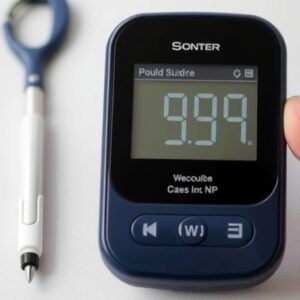Maintaining healthy blood sugar levels is vital for a child’s growth, energy, and overall well-being. Whether your child has been diagnosed with diabetes, is at risk, or you’re simply curious about how to support their health, understanding blood sugar ranges is key. Let’s dive into what is considered a healthy range for kids and why it matters.
Healthy Blood Sugar Ranges for Children
For most children without diabetes, the general blood sugar ranges are:
- Before meals (fasting): 70–110 mg/dL
- After meals (1–2 hours): Below 140 mg/dL
These numbers can vary slightly depending on factors like age, health conditions, and activity levels. For children with diabetes, target ranges are often set by their healthcare provider, and these may differ based on individual needs.
Why Maintaining a Healthy Range Matters
Blood sugar levels that are too high (hyperglycemia) or too low (hypoglycemia) can cause short- and long-term health issues:
- Hyperglycemia (high blood sugar): Can lead to fatigue, increased thirst, and, over time, damage to organs.
- Hypoglycemia (low blood sugar): May cause dizziness, confusion, and in severe cases, loss of consciousness.
Keeping blood sugar stable helps children feel energetic, focus better in school, and grow without health complications.
Factors That Impact Blood Sugar in Kids
- Diet: Foods high in refined sugar or carbohydrates can spike blood sugar. Encourage low-glycemic foods like whole grains, vegetables, and proteins.
- Activity Levels: Regular physical activity helps stabilize blood sugar by improving insulin sensitivity.
- Stress and Sleep: Stress and poor sleep can cause fluctuations in blood sugar levels.
Tips for Supporting Healthy Blood Sugar in Kids
- Balanced Meals: Focus on meals that include fiber, healthy fats, and protein to prevent sugar spikes.
- Regular Monitoring: If your child has diabetes, use a blood glucose monitor or a continuous glucose monitor (CGM) as recommended by your doctor.
- Encourage Exercise: Simple activities like walking, cycling, or playing outside can help regulate blood sugar.
When to Consult a Doctor
If your child consistently shows blood sugar levels outside the healthy range or exhibits symptoms like excessive thirst, frequent urination, or fatigue, consult a healthcare professional. Early intervention can prevent complications.
Healthy blood sugar levels are the foundation of a child’s well-being. With balanced nutrition, regular activity, and monitoring when needed, you can ensure your child thrives.
Would you like to explore tools for tracking your child’s blood sugar? Let us know!





